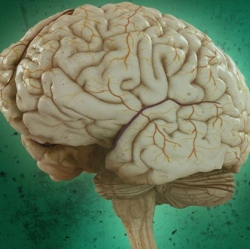
A new brain map, based on multiple scans of more than 400 individuals, has carved the "cortex" into 180 different compartments – 97 of which are new. This crumpled outer layer of the brain is home to our advanced cognition, perception and movement. This new effort is a landmark attempt at a modern atlas.
The work is reported in Nature and the data is available to scientists online. It the most significant result to date from the Human Connectome Project, a US-led collaboration aimed at unravelling the wiring of the human brain and how it affects behaviour.
Dr Emma Robinson, now at Imperial College London, is a co-author of the Nature paper and was part of the Oxford University team which built software to analyse the project’s huge streams of data. "This is the culmination of the entire HCP project that we’ve been working towards," she told BBC News.
"This paper is really a mammoth effort by Matthew Glasser and David Van Essen (of Washington University in St Louis, Missouri) – manually labelling brain regions, but also pulling together all the streams that we’ve been working on, trying to collect incredibly high quality images and state-of-the-art imaging processing techniques."
The team used several different types of information, derived from lengthy scanning sessions of 210 people, to define the boundaries of 180 areas in each brain hemisphere.
To begin with, there were physical properties to consider – such as the amount of myelin, the substance which wraps nerve fibres, detected throughout the cortex; or variations in the folding and the thickness of the cortex.
But the researchers also looked at brain activity. Which regions were activated by particular tasks – reading as opposed to gambling, for example? And to what extent was activity in one area correlated and coordinated with activity elsewhere?
fter using automatic computational tools to separate those 180 areas, the team set about testing and confirming the results on a fresh sample of 210 individual brains.
There were, perhaps inevitably, some differences between individuals, but brain researchers have welcomed the map as the most detailed human brain atlas to date.
Prof Tim Behrens, another computational neuroscientist at the University of Oxford, is involved in the HCP but was not an author on the new paper – which he described as "awe inspiring".
"Obviously there are a bunch of people who have done parcellations before. But this one is extraordinary because of the level of precision.
"Every one of those 180 areas in this paper is described in detail – its relation to the previous literature, its functional properties, its anatomical properties… Nobody will do as good a job as this for a long time.
"It will now be the parcellation that is used by all of neuroscience, I would think."
